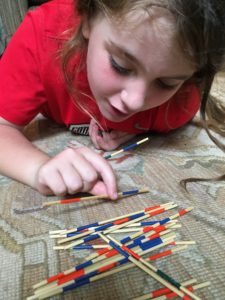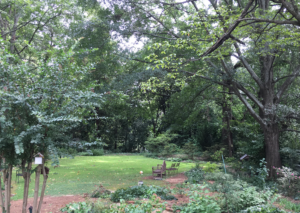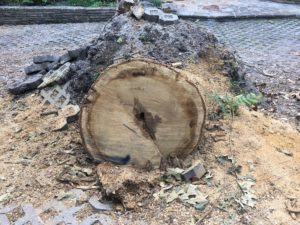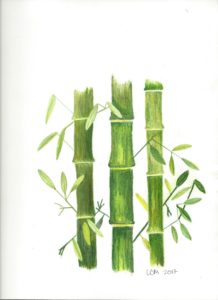 My seven year old granddaughter, Ellie, loves to play pick up sticks so I thought she would jump at the opportunity to pick up some real sticks in the back yard! I was wrong. So, we sat on the living room floor and played a few rounds of the game, then I sent her home and went out to pick up after Irma.
My seven year old granddaughter, Ellie, loves to play pick up sticks so I thought she would jump at the opportunity to pick up some real sticks in the back yard! I was wrong. So, we sat on the living room floor and played a few rounds of the game, then I sent her home and went out to pick up after Irma.
The task seemed endless as limbs and branches were strewn all over the ground but in a surprisingly short time, I had much of the yard cleared and a satisfyingly large stack of debris stacked. The more I worked, the better I began to feel and I remembered all over again why I love to garden.
Gardening, even doing something as mundane as picking up sticks, allows me the illusion of control over something. I can, at least for the moment, make my garden look neat and cared for. Who knows how long it will last? I am still incredibly vulnerable to the vagaries of nature. I can’t stop trees from falling. I can’t stop hurricanes from blowing through. But I can go outside and breathe fresh air and relish the sunshine on my skin and feel the dirt beneath my hands and it helps. It centers me and reminds me that I even though I’m not in charge, I am part of nature and connected – for better or worse – to all other living things, including the oak trees that created such devastation in our neighborhood.

Although I’ve always admired the oak, I’m beginning to wonder if its the best role model. Not to sound too dramatic about it, but all of this reflection with Irma and the Oak Tree (sounds like a great title for a kid’s book!) has given me a new life plan. I think I’d rather be a bamboo than an oak. An oak stands immovable and solid – until it doesn’t. Even though the slender bamboo may not be the mighty force that the oak is, it does manage to survive the storms. It’s better to bend than break, better to sway than fall.
As we continue to face the results of a rapidly changing climate, ferocious storms and devastation will occur more and more frequently. How will we survive? How will we handle this increasing fear and stress in our lives? My daughter-in-law Emily had some ideas about this in her comments on my last post about the hurricane. She said that we all need “…to swim through the trauma to reach the shore of resiliency.” Note she did not say “safety” she said “resiliency.” We can’t control our environment to keep ourselves safe but we can learn to not let a storm such as Irma define us. In other words, we can become more like the flexible bamboo rather than the mighty oak.
Laura
P.S. I encourage you to read all of Emily’s excellent comment on last week’s post. I’ve pasted it below. Emily is founder and director of Cascade Mountain School and is a passionate (and articulate!) environmentalist and educator. http://CascadeMountainSchool.org
Oh My Goodness! What an incredible story. I guess the ancient cultures also used to say that a total solar eclipse portends doom and destruction…I would definitely say we have gotten our fair share in this country since August 21st.
The air in Hood River is so smoky that school is closed again tomorrow.
The United States is experiencing the results of a climate-changed world, like other parts of the world have already been experiencing. Climate change is quickly touching our lives in little and big ways. Will we continue to ignore Nature’s warning signs and try to resume to business as normal?
What is the new normal? In addition to physical destruction and economic repercussions, how are our bodies handling the micro and macro-traumas of feeling unsettled, being worried about life and limb, home and family? How do we accept and move through these situations to meet resilience on the other side?
The hurricanes, earthquakes, and fires are teaching us many important lessons. One of them is that our world is full of uncertainty. Another is that we are intimately connected to everything and everyone else. Our survival depends on our capacity to accept what is and to meet it head-on, to swim through the trauma to reach the shore of resiliency, and to stay committed to love, which is the only thing that consistently trumps fear.
Thank you, Laura, for sharing your story.
